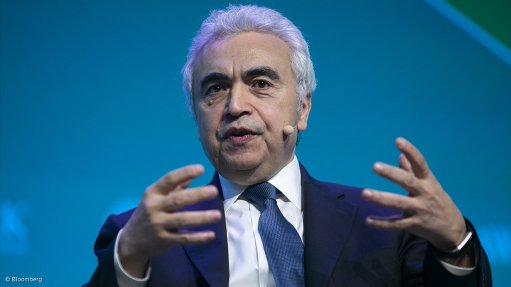
IEA executive director Fatih Birol
The International Energy Agency (IEA) is warning that investment in transmission and distribution infrastructure is failing to keep pace with renewables projects, and is leading to a large and growing queue of projects waiting to be connected to the grid globally.
In a newly published report titled ‘Electricity Grids and Secure Energy Transitions’, the agency notes that advanced projects with a combined capacity of 1 500 GW, or five times the amount of solar and wind capacity added worldwide in 2022, are currently waiting to be connected to the grid.
The report also identifies a lack of investment in grid infrastructure as one of the reasons for ongoing loadshedding in South Africa currently, noting too that no wind projects were awarded during the country’s most recent renewables auction as a result of a lack of grid capacity.
However, a recent domestic assessment indicated that significant grid capacity could still be unlocked in provinces such as the Western Cape under a framework accommodative of less than 10% renewable-energy curtailment, which is a common practice among international transmission system operators.
Nevertheless, there is a growing push for accelerated investment in new grid infrastructure, with government even considering private sector participation models to help fund the estimated R210-billion-plus required to add 14 000 km of new power lines and associated transformation capacity by early in the next decade.
A report on the options is being prepared and will reportedly serve before Cabinet in the not-too-distant future.
Globally, the IEA calculates that 80-million kilometres of power lines will need to be added or refurbished by 2040 to meet national climate and security-of-supply targets – a rollout that is equivalent in scale to all grids currently in operation globally.
It adds that yearly grid-related investment will also need to double to more than $600- billion a year by 2030.
In modelling the carbon impact of failing to scale up such investments, the report outlines a so-called ‘Grid Delay Case’, showing that cumulative carbon dioxide (CO2) emissions between 2030 and 2050 would be almost 60-billion tonnes higher as a result of a slower rollout of renewables that results in higher fossil fuel consumption.
Under such a scenario, emissions would be equivalent to the total CO2 emissions from the global power sector over the past four years, implying a global temperature rise well above the Paris Agreement target of 1.5 °C, with a 40% chance of exceeding 2 °C.
“We must invest in grids today or face gridlock tomorrow,” IEA executive director Fatih Birol argued when releasing the first-of-its-kind global study on October 17.